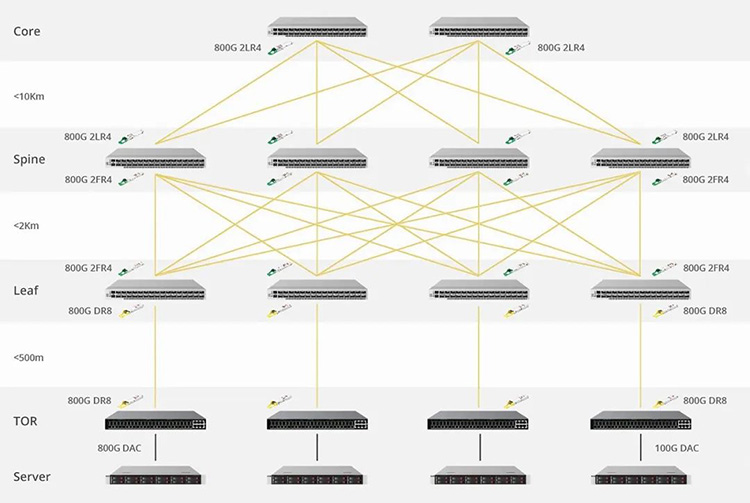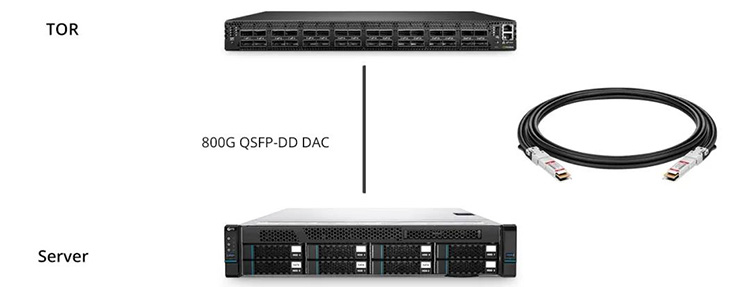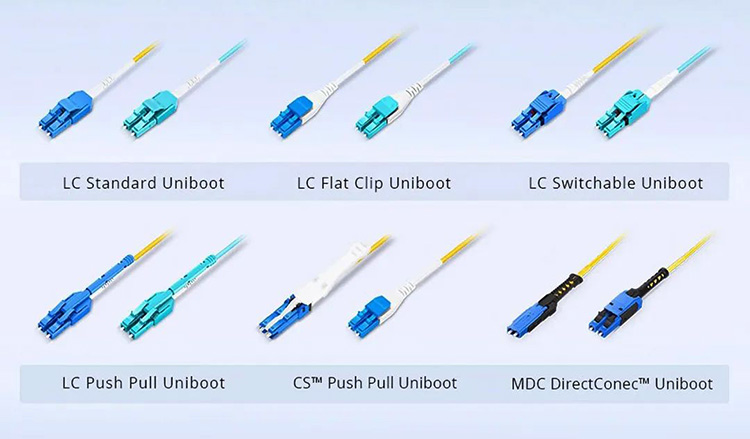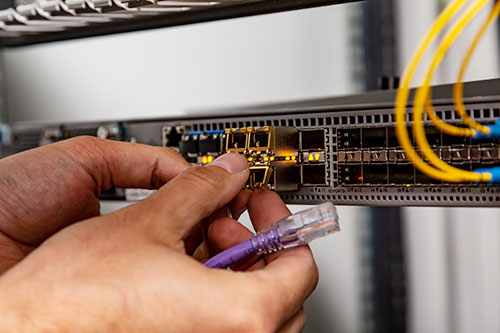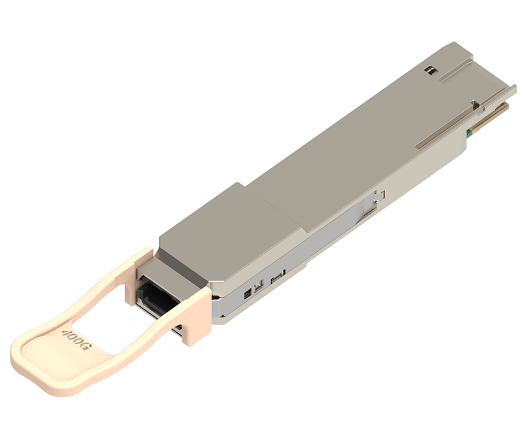目录
ToggleIntroduction
With rapid technological advancements, data centers are evolving at unprecedented speeds. While 100G and 400G data centers have become widespread, 800G data centers are now emerging to meet the exponentially growing demand for high-speed data transmission. Efficient and reliable cabling solutions are essential for supporting these high-speed data centers. This article explores the cabling solutions for 800G data centers, including Direct Attach Cables (DACs), Active Optical Cables (AOCs), and fiber optic cables, highlighting their roles, benefits, and application scenarios.
800G Data Center Cabling Solutions: DAC and AOC
Direct Attach Cables (DAC)
DACs, including passive copper cables, active copper cables (ACC), and active electrical cables (AEC), offer a cost-effective solution compared to fiber optics. They are widely used for short-distance interconnections within data centers, providing the necessary speed, capacity, and reliability. DACs are suitable for connecting servers within a rack, utilizing passive copper wiring to ensure high-quality connections without additional power requirements. Walsun’s 800G DACs support hot-swappable functionality, low power consumption, small bend radius, and flexible cabling, making them ideal for data center environments.
Active Optical Cables (AOC)
AOCs are lighter, smaller, and offer lower bit error rates and longer transmission distances compared to DACs. They are ideal for short-distance connections in data centers, supercomputers, cloud computing, and networking equipment. AOCs provide seamless communication and data transmission, with configurations available for both direct and breakout connections. For 800G data centers, AOCs enhance bandwidth, minimize latency, and reduce power consumption, making them suitable for decentralized data centers and cloud environments.
Advanced Copper Cable Solutions: ACC and AEC
As data transmission rates increase, copper cable loss becomes a significant issue. ACCs and AECs address this challenge by incorporating advanced chip architectures. ACCs use Redriver chips to adjust the gain at the receiver end through Continuous-Time Linear Equalizers (CTLE), while AECs use retimer chips to amplify, equalize, and reshape signals at both the transmitter and receiver ends. These solutions are ideal for connecting top-of-rack (TOR) switches and servers, simplifying patching processes and offering cost-effective short-link connectivity with higher bandwidth capabilities.
800G AOC Solutions
800G AOCs leverage PAM4 DSP technology and optimized VCSELs to enhance performance while reducing costs and complexity. They support point-to-point interconnections at speeds up to 800Gbps over distances up to 100 meters. Additionally, 800G AOCs can connect next-generation 800Gbps switches to existing 400Gbps ports using breakout cable configurations, eliminating the need for additional converters or mappings.
Fiber Optic Cable Solutions for 800G Data Centers
Fiber optic cables provide superior performance and efficiency for high-speed data transmission in 800G data centers. They are particularly suited for high-density cabling solutions, offering minimal latency, low power consumption, and longer transmission distances.
MTP/MPO Fiber Cables
MTP/MPO cabling solutions offer high density, reliability, and flexibility, essential for connecting core, backbone, and leaf platforms in data centers. They support plug-and-play installation, are easy to manage, and provide excellent bend and crush resistance. MTP/MPO cables are available in various configurations, such as 8-fiber, 12-fiber, 16-fiber, and 24-fiber, with 16-fiber MTP trunks designed for 800G QSFP-DD/OSFP DR8 and 800G OSFP XDR8 direct connections. These cables also support 100G/400G/800G upgrades, making them ideal for modern 800G data center deployments.
Uniboot Fiber Patch Cords
Uniboot cables consolidate two fibers into a single cable, reducing cabling volume. They use ultra-small form factor (VSFF) connectors to support 200/400/800G Ethernet communication, offering 1.5 times higher cabling density compared to duplex LC connectors. Designed for high-density fiber patching in 200/400/800G data centers, uniboot cables save space and simplify cable management, making installation and maintenance easier while improving overall network performance.
Conclusion
Deploying 800G data centers requires careful consideration of different cabling types and their specific characteristics. Each cabling solution—DAC, AOC, and fiber optic cables—offers unique advantages and should be chosen based on the network’s specific requirements. By selecting the appropriate cable type and considering factors such as bandwidth, distance, and cost, data centers can achieve seamless operation at 800G speeds, ensuring the necessary connectivity and support for high-speed data transmission.

